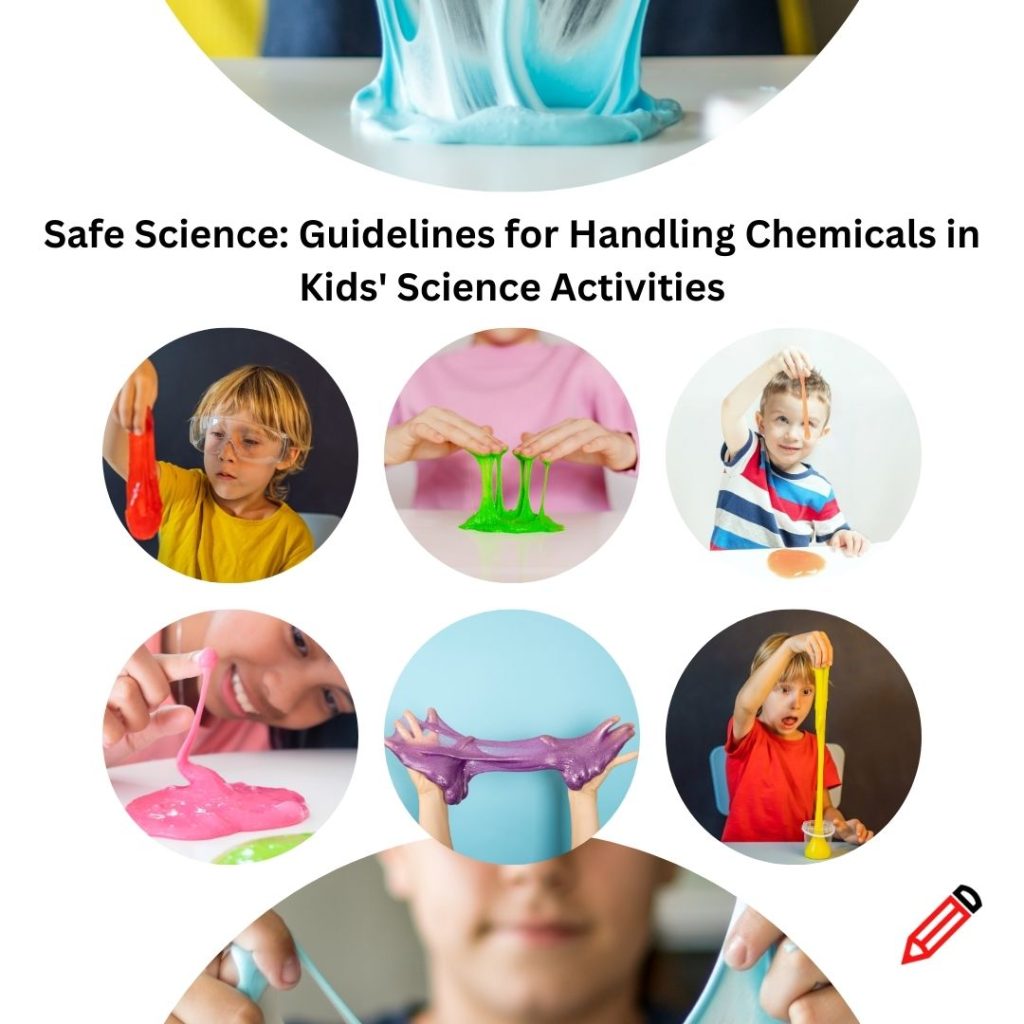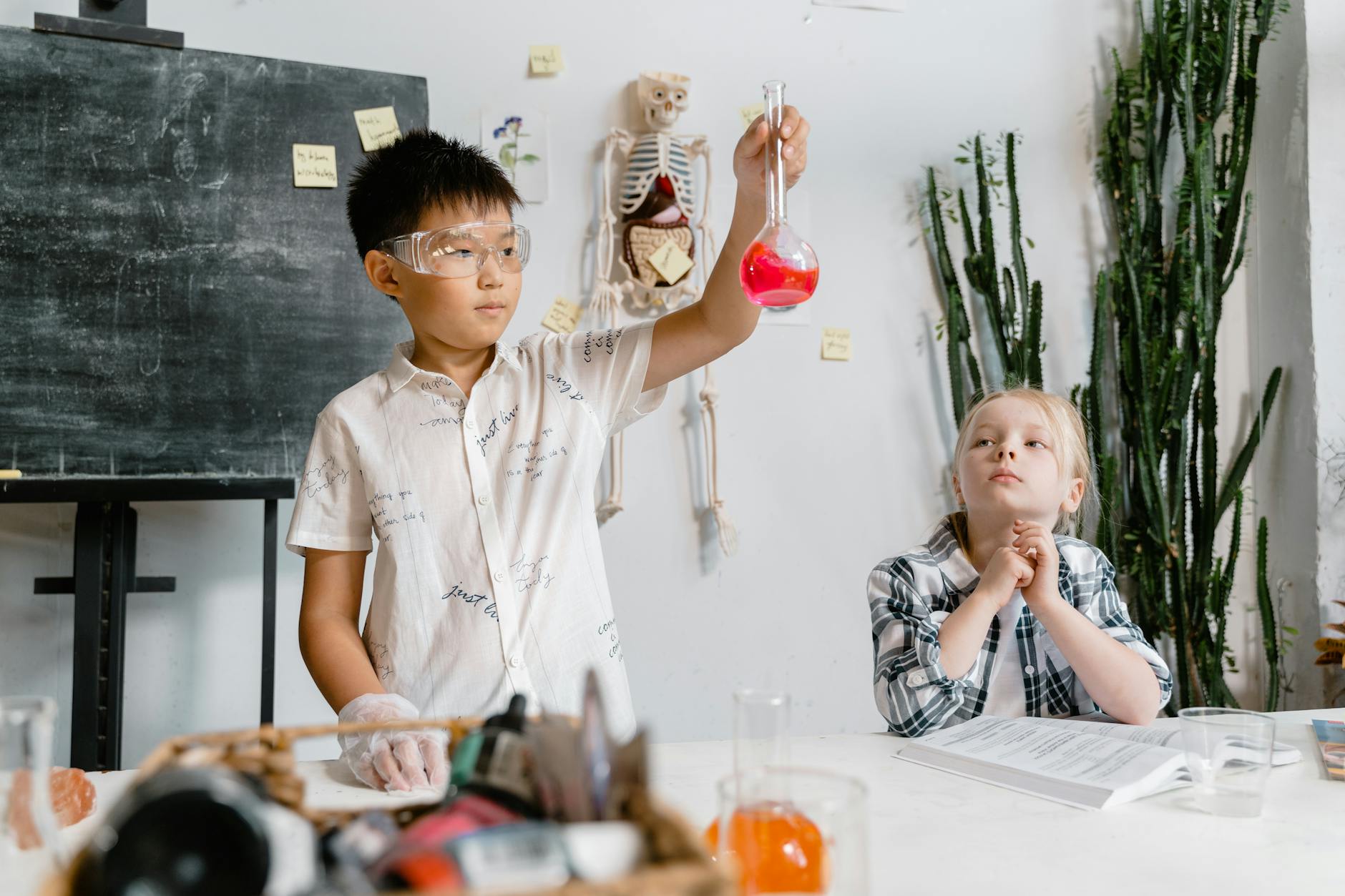Engaging children in science activities fosters curiosity, critical thinking, and a love for learning. However, when it comes to hands-on experiments involving chemicals, safety is paramount. This article provides essential guidelines on handling chemicals safely while conducting science activities with kids, ensuring a secure and enjoyable learning experience.

1. Establish Hand/Eye Washing Facilities:
Having readily accessible handwashing and eye-rinsing facilities is crucial for a quick response in case of accidental chemical exposure. Ensure that participants can easily access sinks with running water and eyewash stations. Teach children the importance of washing hands thoroughly after handling any chemicals or conducting experiments, promoting good hygiene habits.
2. Emphasize Immediate Hand Washing:
Establish a routine that emphasizes immediate hand washing after handling any chemicals, including common household items like dish soap. Encourage children to wash their hands for at least 20 seconds, ensuring that all residues are thoroughly removed. This practice not only promotes safety but also instills good hygiene habits from an early age.
3. Ensure Clear Ingredient Listing:
All products used in science activities with kids should have clear and comprehensive ingredient lists. This is essential for identifying potential allergens and ensuring that educators and parents are aware of the substances involved. Check products beforehand to confirm that they provide accurate and accessible information about their ingredients. Avoid products with obscure ingredients like “fragrance” that may trigger sensitivities or irritate the skin.
4. Check for Allergies:
Before conducting science activities, check with participants and their parents or guardians to identify any allergies or sensitivities. Tailor experiments accordingly to avoid potential allergens.
5. Use Personal Protective Equipment (PPE):
When appropriate, use personal protective equipment (PPE) such as gloves or safety glasses to minimize direct skin contact and protect sensitive areas like the eyes.
6. Prevent and Clean Up Spills:
Accidental spills are inevitable in science activities, but swift and proper cleanup is key to maintaining a safe environment. Follow these steps:
- Prevention: Use spill-resistant containers and ensure lids are secure during experiments. Encourage careful handling and measured pouring to minimize the risk of spills.
- Cleanup on Clothing: In case of spills on clothing, have spare lab coats or aprons available. Promptly remove contaminated clothing and provide a replacement to prevent prolonged exposure.
- Body Parts: For spills on body parts, rinse the affected area with copious amounts of water. In the case of eye exposure, use an eyewash station immediately.
- Surface Cleanup: For spills on surfaces, use appropriate cleaning materials, such as spill kits or absorbent materials, to contain and clean up the spill. Follow proper disposal procedures for used materials.
By incorporating these safety measures into your science activities, you can create an environment where children can explore and discover scientific concepts safely and enjoyably. Always prioritize the well-being of the participants, and instill in them the importance of responsible and safe science practices from an early age. This not only enhances their learning experience but also cultivates a lasting appreciation for the wonders of science.
===
Interested in teaching medical literacy pain free? Shop medical literacy resources!

This article was drafted by ChatGPT and edited by Joan Lee Tu, the founder of MedULingo.com.
You may also be interested in the following:
Preventing Contact Allergies in Kids: A Guide for Parents – FREE DOWNLOAD
Preventing Contact Allergies Tip Sheet – FREE DOWNLOAD
Consumer Literacy Scavenger Hunts – FREE DOWNLOAD
Safe Science: Guidelines for Handling Chemicals in Kids’ Science Activities
Safeguarding STEM Learning: Best Practices for Sanitizing LEGO in Education Programs
The Great Debate: Soap vs. Sanitizer in STEM Education Programs
How to Accommodate People with Contact Allergies
Why Medical Literacy Needs To Be In Your School STEM Program
Why a Robust STEM Education Program Needs to Include Medical Literacy
20 Benefits of Including Medical Literacy in Your STEM Program
How Medical Literacy Activity Books Empower Learners in STEM Education
How to Empower Future STEM Innovators with Self-Directed Learning in Medical Literacy
Why STEM Education Needs Medical Literacy to Foster Healthcare Innovators
Why You Need Diverse Learning Modalities for Medical Literacy

